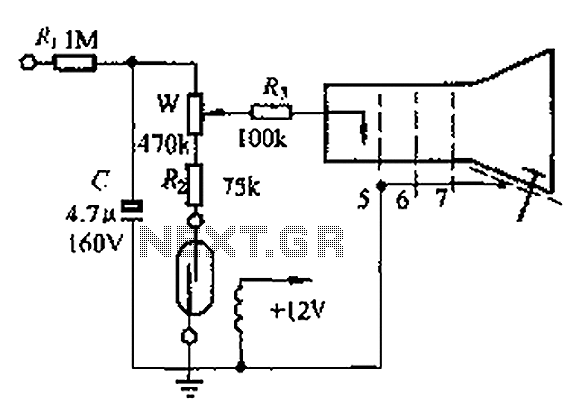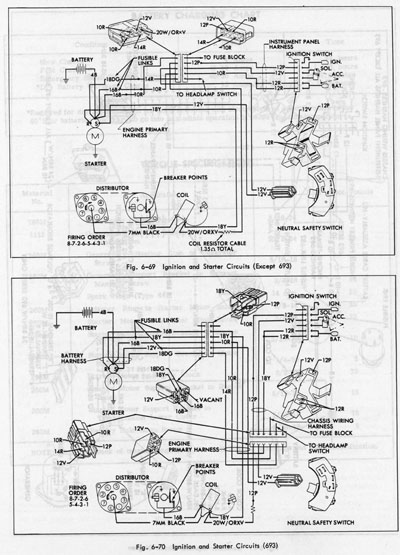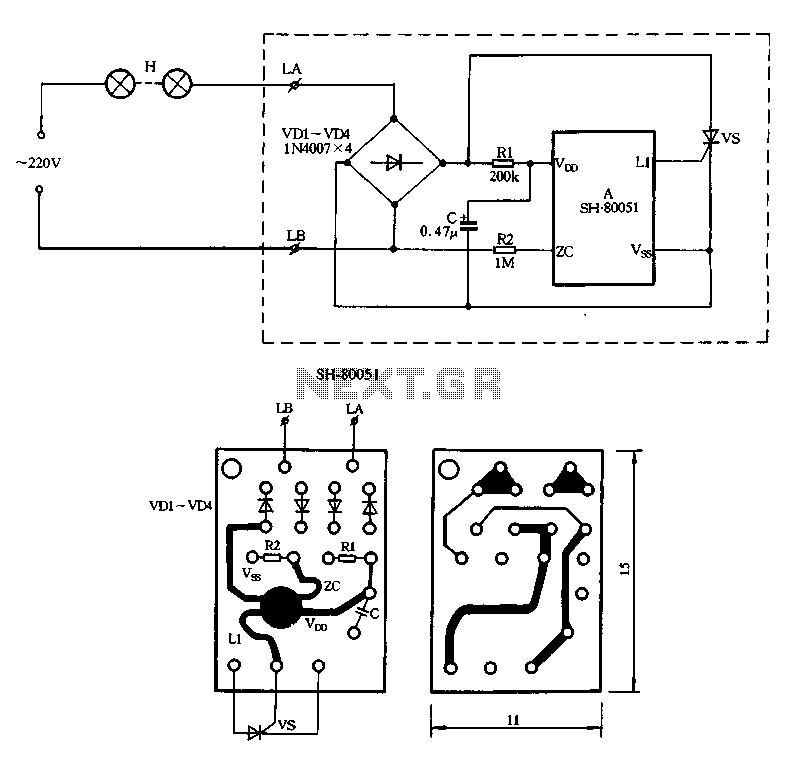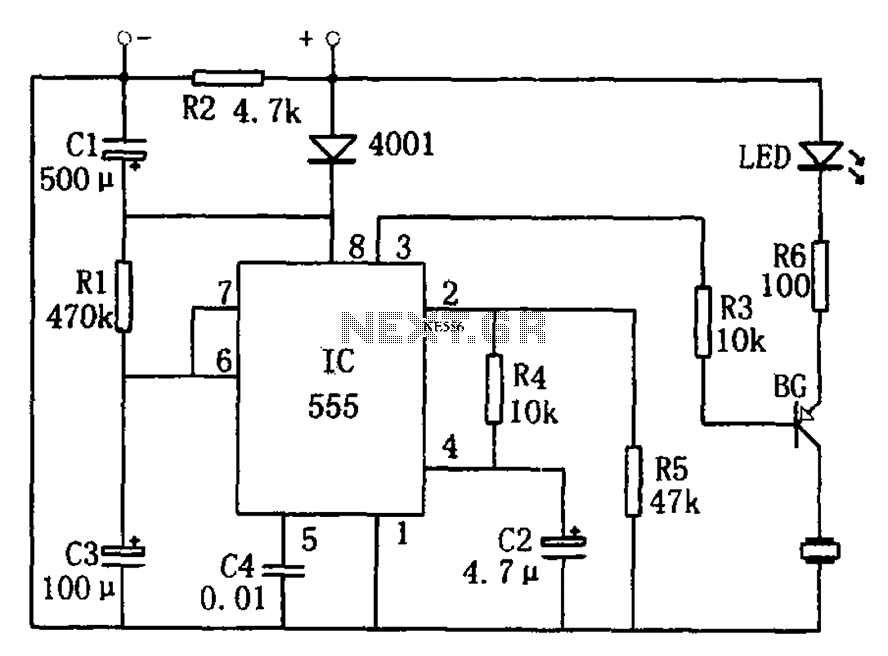
Nite Rider Lights
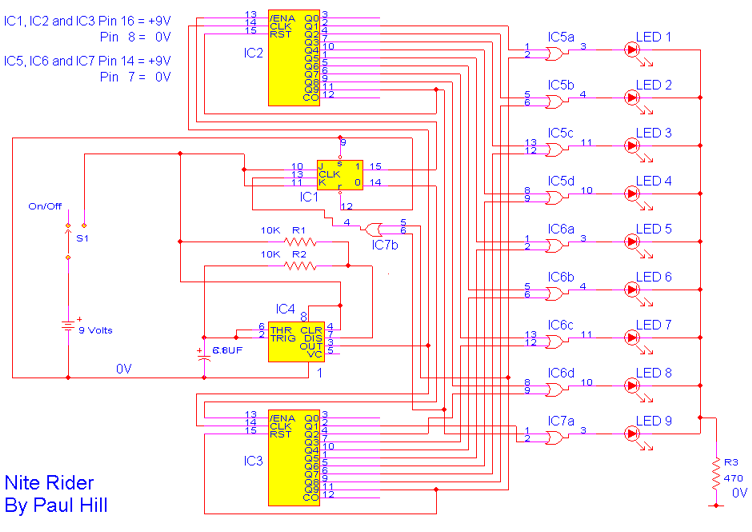
An intriguing lighting solution for bicycles, utilizing LEDs. It features low power consumption and includes a circuit diagram for an electronics project, operating at 9V, utilizing the NE555 timer.
The bicycle lighting circuit employs a NE555 timer IC configured in astable mode to create a flashing LED effect, enhancing visibility and safety during night rides. The circuit is powered by a 9V battery, ensuring sufficient voltage for the operation of multiple LEDs while maintaining low power consumption.
The schematic includes several key components: a NE555 timer, resistors, capacitors, and the LEDs themselves. The NE555 timer is the core of the circuit, generating a pulse-width modulation (PWM) signal that controls the on-off cycling of the LEDs. Resistors are used to set the timing intervals and limit the current flowing through the LEDs, preventing damage and ensuring longevity.
Capacitors are employed to stabilize the voltage levels and smooth out any fluctuations in the power supply, which is crucial for maintaining consistent LED brightness. The arrangement of the LEDs can be customized; they can be connected in series or parallel configurations depending on the desired brightness and aesthetic effect.
This circuit design not only provides an effective lighting solution but also serves as an excellent educational project for those interested in electronics, allowing for practical experience with fundamental components and circuit design principles.Interesting light for your bicycle. Made of LEDs. Very nice! Low power consumption, circuit diagram, electronics project, 9V, NE555.. 🔗 External reference
The bicycle lighting circuit employs a NE555 timer IC configured in astable mode to create a flashing LED effect, enhancing visibility and safety during night rides. The circuit is powered by a 9V battery, ensuring sufficient voltage for the operation of multiple LEDs while maintaining low power consumption.
The schematic includes several key components: a NE555 timer, resistors, capacitors, and the LEDs themselves. The NE555 timer is the core of the circuit, generating a pulse-width modulation (PWM) signal that controls the on-off cycling of the LEDs. Resistors are used to set the timing intervals and limit the current flowing through the LEDs, preventing damage and ensuring longevity.
Capacitors are employed to stabilize the voltage levels and smooth out any fluctuations in the power supply, which is crucial for maintaining consistent LED brightness. The arrangement of the LEDs can be customized; they can be connected in series or parallel configurations depending on the desired brightness and aesthetic effect.
This circuit design not only provides an effective lighting solution but also serves as an excellent educational project for those interested in electronics, allowing for practical experience with fundamental components and circuit design principles.Interesting light for your bicycle. Made of LEDs. Very nice! Low power consumption, circuit diagram, electronics project, 9V, NE555.. 🔗 External reference


